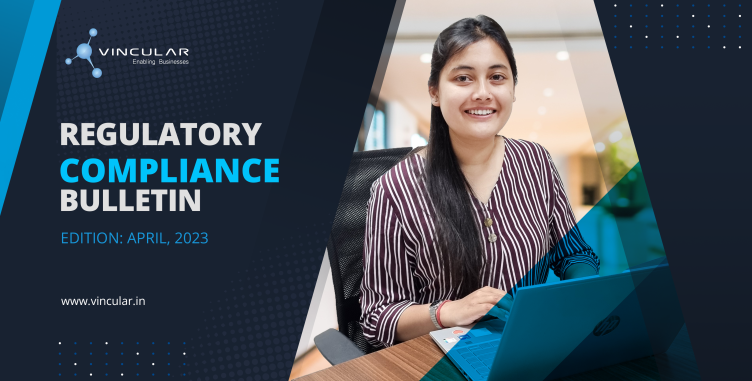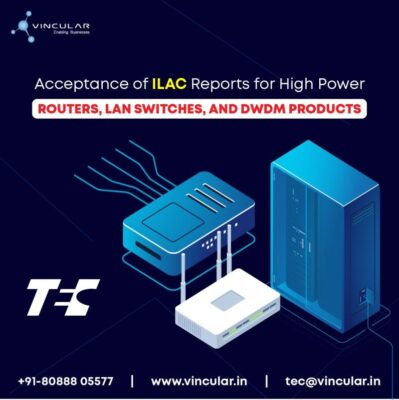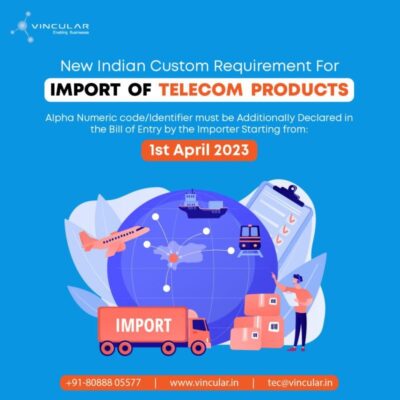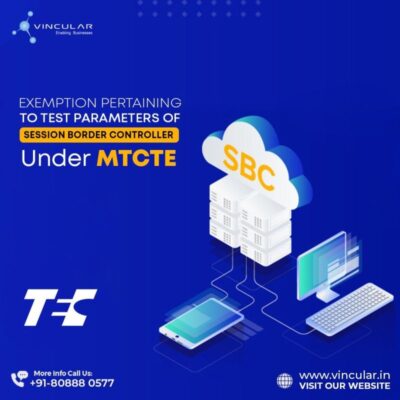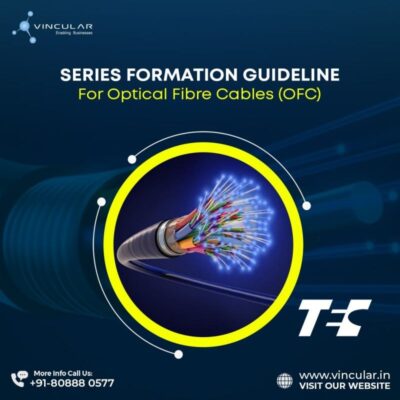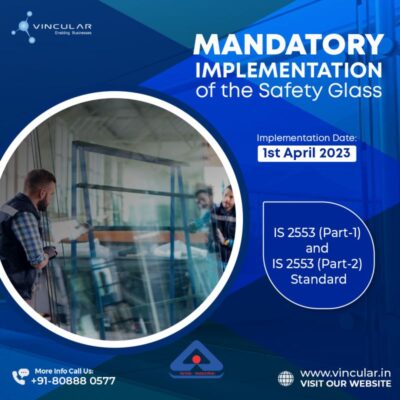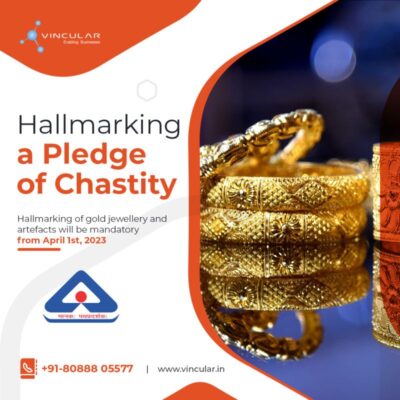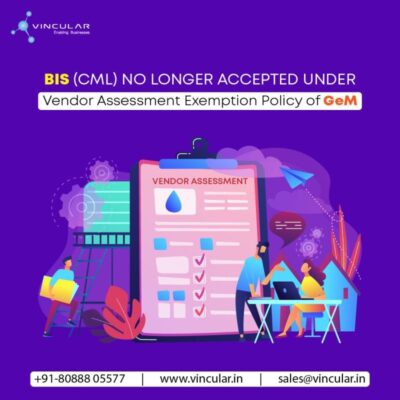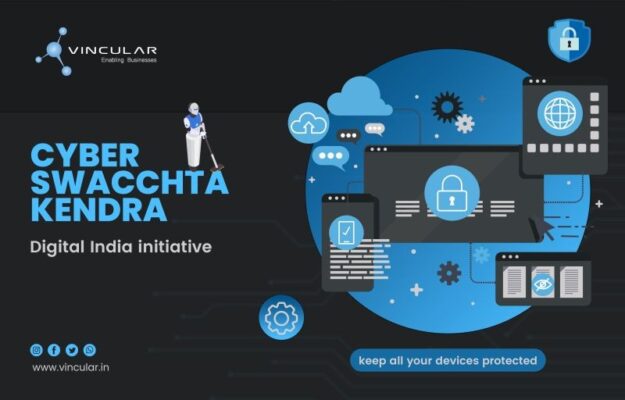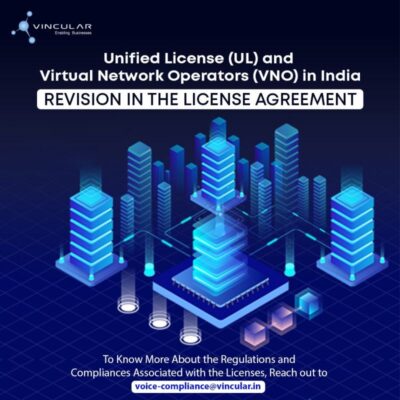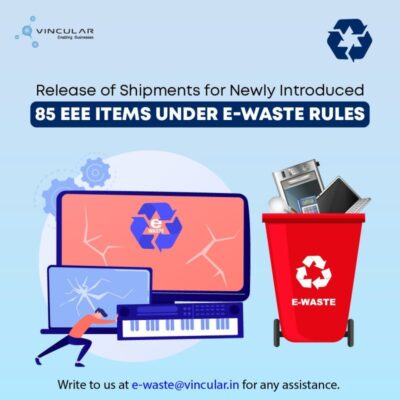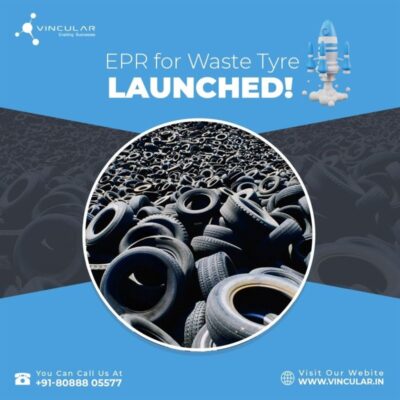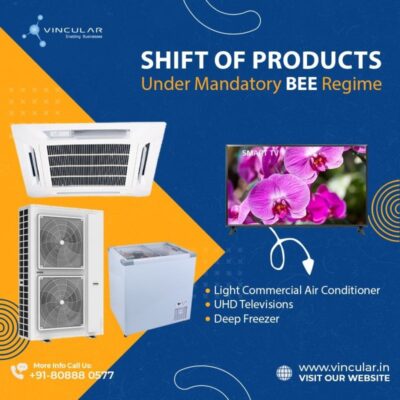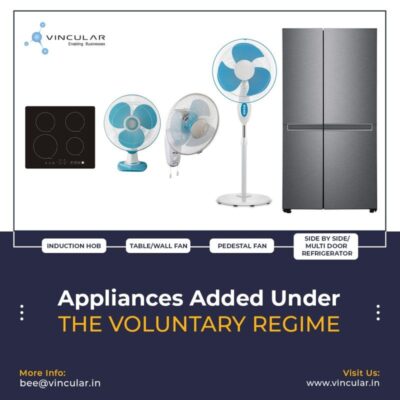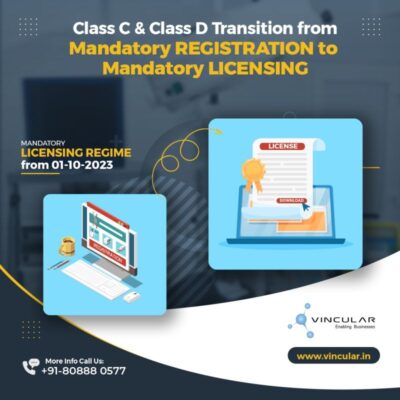
REGULATORY COMPLIANCE BULLETIN (Newsletter- April, 2023)
REGULATORY COMPLIANCE BULLETIN (Newsletter- April, 2023) TEC Non-applicability of Test Parameters for Multimedia Conferencing Equipment, LAN Switch, and IoT Gateway TEC has released another relaxation for the industry & stakeholders falling under the MTCTE certification regime. From 29th March 2023, the following test parameters for IP Multimedia Conferencing Equipment,
REGULATORY COMPLIANCE BULLETIN (Newsletter- April, 2023)
TEC
Non-applicability of Test Parameters for Multimedia Conferencing Equipment, LAN Switch, and IoT Gateway
TEC has released another relaxation for the industry & stakeholders falling under the MTCTE certification regime. From 29th March 2023, the following test parameters for IP Multimedia Conferencing Equipment, LAN Switch, and IoT Gateway are not applicable till the next order is circulated by TEC. The decision was possibly made due to the unavailability of enough testing facilities in the country.
Acceptance of international reports for high-end Routers, LAN Switches, and DWDM products
TEC has announced the acceptance of test reports issued by ILAC (International Laboratory Accreditation Cooperation) accredited labs for Safety and EMI EMC parameters for Routers, LAN Switches, and DWDM (Dense wavelength division multiplexing) products, if:
The product operates on single or three- phases with current requirement >=32A
OR
The product operates on 48VDC with current requirement >=100A
It should be noted that:
- Information on Voltage, Current, and Power should be mentioned in the BOM (Bill of Material).
- The reports should be issued by labs located in non-border sharing nations.
- OEM (Original Equipment Manufacturer) will have to prepare and submit a self-declaration of conformity to technical parameters as per ER (Essential Requirements).
- A provisional certificate will be issued by TEC valid for 2 years.
- The certificate should be integrated with security requirements as per the guidelines issued by TEC.
New Indian Custom requirement for import of Telecom Products
The Indian Central Board of Indirect Taxes & Customs under the Ministry of Finance has recently released a notification that lists the description and alpha-numeric identifiers for telecommunication products being imported in India.
This notification has been drafted in consultation with the Department of Telecom, with an intent to bring more clarity for the identification of telecom/technology goods, starting from the initial stage of import declarations itself.
The notification has two Annexures. Annexure I consist of the identification criteria for certain telecom equipment falling under HSN/tariffs 85176290 and 85176990, such as Optical Transport Equipment, Gateway Controllers, Session Border Controllers, Carrier Ethernet Switches, etc. Annexure II contains an additional alphanumeric code/identifier for these telecom products.
This alpha numeric code/identifier must be additionally declared in the Bill of Entry by the importer starting from 1st April 2023 in order to bring clarity within the stakeholders towards the devices being imported.
Exemption for technical pertaining to parameters of Session Border Controller under MTCTE
TEC has released a generic exemption against a few of the testing parameters applicable on the Session Border Controller (SBC) category under MTCTE (Mandatory Testing and Certification of Telecom Equipment). The following parameters have been accorded a general exemption:
This exemption is valid till 30th June 2023 or till the time a further order is received from TEC. This notification can be uploaded against the above set of parameters while submitting the certification application on the MTCTE portal to avail the exemption.
Note: Session Border Controllers are designed to control communication that navigates through service provider networks, as well as handle all the signaling and media functions required to make SIP (Session Initiation Protocol) work seamlessly. SBCs enforce the Quality of Service (QoS) for conversations, as well as maintain security throughout an IP network.
Series formation guideline for Optical Fibre Cables (OFC)
TEC have recently released the criteria to define the series formation of OFC under MTCTE:
1. Family Model Criteria:
- Different models of OFC built around same cable elements like Micro Module, Ribbon Fibre, Loose Tube, and Tight buffer, but with difference in cable design based on fibre types (such as G.652.D, G.657.A1 and G.657.A2), single or double sheath, flooding and filling type, inner outer sheath material or any constructional design change, may be submitted with this approach as a family on the MTCTE portal.
- Complete testing of any one OFC model from the family may be done as per ER.
- Testing of incremental parameters need to be done on other models of family depending on varying cable designs.
2. Associated Model Criteria:
- For different models of OFC under specific variant of ER built around varying fibre count with same cable elements and same cable design parameters, OFC model with highest fibre count may be submitted as the main model and rest can be included as associated model under one series.
If the fibre count of any OFC model is higher than the models mentioned in the already certified family or associate models, the applicant need to apply for fresh certificate.
New ER preparation under MTCTE for LAN Switch, Routers, and IP Security Equipment
Technology is evolving at a rapid rate and every day a new product is introduced to the market. This year started with a massive rollout of technology-driven innovations, such as the introduction of AI for the common populace, the onset of 5G technology for end-consumers, automation and IoT technology becoming the new normal for various industries, among many others. To meet the ever-evolving landscape of this space and keep in pace with market requirements, manufacturers are now developing new products for consumers and industries. Some of these products are based on totally new technologies and some have additional features added to old existing variants.
TEC, being the regulating body for technology and telecommunication in India, has also observed that there may be some new products corresponding to categories of LAN Switch, Routers, and IP Security Equipment that are not covered under existing ‘Essential Requirements’ in MTCTE.
With this intent, TEC is inviting inputs from all stakeholders and OEMs on the new product available in the market that do not fall under any ER of LAN Switch, Routers, and IP Security Equipment. The brands and OEMs can share the product-specific technical features/parameters, so that case may be taken up by TEC for the preparation of ER of such products as a new product or a separate variant under existing ERs.
The inputs in the above matter should be shared with TEC by 10th May 2023, to enable the department to further necessary action in this regard.
The e-mail IDs to be referred here are from TEC’s IT division: dirit2.tec-dot@gov.in (Mr. Jasvir Singh), ddgi.tec@gov.in (Mr. Shashi Mohan), adic1.tec@gov.in (Ms. Shona Grover)
BIS-CRS
Introduction to IS 18112:2022, Ensuring Convenient Reception of Free-to-Air TV and Radio
Requirement of Compulsory Registration Order, 2021 has been amended by the MeitY. The CRO programme has been expanded to Phase-VI to include the goods listed below,

At present, Television is required to have set top box to view Free to Air TV and paid channels. To allow the reception of Free to Air TV and Radio channels for the viewers, BIS has come up with standard IS 18112: 2022 wherein the reception of free to air & radio channels is possible without use of set top box. There is a need for television receivers with inbuilt suitable satellite tuner that the manufacturer must comply with basis the IS 18112: 2022.
The implementation date is after 2 years of issuing the document i.e., 26 April 2025.
BIS-ISI
Mandatory implementation of safety glass under BIS
DPIIT, under the Ministry of Commerce and Industry, Government of India, has released the gazette notification for mandatory implementation of the safety glass which is regulated by the BIS as per the IS 2553 (Part-1) and IS 2553 (Part-2) standard.
The deadline for mandatory implementation, according to the most recent notification, is 1st April 2023. As this deadline has passed, it is now prohibited to manufacture, sell, or import glass into the Indian market without an ISI mark. Also, the above-notified glasses to be utilized as an accessory in their corresponding host products will also be regulated under the said mandatory order.

Note: DPIIT released a new QCO on 24th March 2023, amending a few things in the safety glass order. Below are the highlighted FYR.
- This order will not be applicable to the import of safety glass by a vehicle manufacturer for manufacturing up to ten thousand vehicles in India per financial year
- This order will not be applicable to the import of safety glass up to five thousand in a financial year for the purpose of repair or after-sales service of vehicles.
BIS- Hallmarking
Hallmarking a pledge of chastity
Hallmarking of gold jewellery and artifacts will be mandatory from 1st April 2023. Jewellers can only sell 6-digit alphanumeric HUID code marked jewellery to consumers. Gold jewellery hallmarking is now available in 14, 18, 20, 22, 23, and 24 carats. The Bureau of Indian Standards already certified more than 10 crore gold jewellery articles till date, to protect consumers from adulteration.
GeM REGISTRATION
BIS (CML) no longer accepted under Vendor Assessment Exemption policy of GeM
GeM has modified its Vendor Assessment Policy, where GeM has discontinued exemption on Vendor Assessment based on the NSIC (National Small Industries Corporation Limited) certificate and UCC (Unified Communications Certificate).
To avail the vendor assessment exemption, sellers should now have either BIS (CML) for the product or a turnover which is more than Rs.500 Cr.
However, for the SDPM category of products (Servers, Storage, etc.) which fall under CRS, the option of BIS (CML) will not be viable.
Those sellers who have completed VA/VAE previously but have not provided the category details have to complete VA/VAE (as per modified Vendor Validation Policy) by the 20th April 2023. Post this date, the OEM dashboard will be withdrawn if active VA/VAE was not found against the product category wherever applicable.
Telecom Regulatory Compliance For Voice-Based Operations
Cyber Swachhta Kendra
The Ministry of Electronics and Information Technology (MeitY) has launched the Cyber Swachhta Kendra under the Digital India initiative. It is being operated by the Indian Computer Emergency Response Team (CERT-In) under provisions of Section 70B of the Information Technology Act, 2000. The intent behind this is to create a secure cyberspace by detecting botnet activity in India and to notify, enable cleaning, and securing systems of end users to prevent further infections.
Cyber Swachhta Kendra / Botnet Cleaning and Malware Analysis Centre (BCMAC) works in collaboration with the Industry and the Internet Service Providers (ISPs) to trace Internet Protocol addresses infected by Bots and send messages to end users regarding the same. Further, several tools are being developed by partnering with Antivirus companies to enable individuals to clean their systems.
Users can report any malicious behavior on their systems/networks along with sufficient logs to analyze the incidents to CERT-In Incident Response Help Desk at the Email id incident@cert-in.org.in.
UL(Unified License) and Virtual Network Operator (VNO) in India
Recognizing the evolution of technology from analog to digital which has sped up the digitization of voice, data, and video, the governing authorities of the telecommunications industry, the Department of Telecommunications ( DOT ) and the Telecom Regulatory Authority of India(TRAI), have been working towards revamping the regulatory framework for the telecom sector. It is imperative to see the convergence of various services, networks, platforms, technologies, and hence, to overcome the preceding segregation of licensing, registration, and regulatory mechanisms in these areas to enhance affordability, increase access, delivery of multiple services, and reduce cost.
Over the years, TRAI has rolled out several consultation papers and recommendations for Unified License (UL) and Virtual Network Operators (VNO). After acknowledging the recommendations, the government issued a set of guidelines for the grant of Unified License for Telecom Service Providers and Virtual Network Operators (across various services and service areas). The guidelines and the license agreement underwent several amendments over the years based on recommendations of TRAI and discussions with industry associations and telcos.
Recently, DoT has released the revised version of the copy of the license agreement for UL and UL (VNO) dated 5th April, 2023.
The official amendments can be accessed here:
License Agreement for Unified License (UL)
License Agreement for Unified License (Virtual Network Operators) {UL(VNO)}
Waste Management
Release of Shipments for newly introduced EEE items under E-waste Rules
CPCB has released a notice stating the release of consignments from producers of newly launched 85 EEE items under E-waste Rules. The order was proposed to be implemented from, 1st April 2023. However, the portal has not been updated and, these items shall be released post submitting an undertaking in the format published by the CPCB at the official email ID ‘ewaste2.cpcb@gov.in‘. A proof has to be submitted at the customs in hard copy, preferably.
All the producers submitting the undertaking shall submit the online generated EPR Registration Certificate from the E-waste online portal not later than 1 month from the date of submission of the undertaking.
EPR for Waste Tyre is launched
The online portal for EPR for Waste Tyre is launched and has become operational. The provisions of these rules shall be applicable to the following entities-
1. Producer- any person or entity who, –
(i) manufactures and sells new tyre domestically
(ii) sells domestically under its own brand, or manufactured by other manufacturers or suppliers,
(iii) sells imported new tyre; or
(iv) imports vehicles fitted with new tyres; or
(v) automobile manufacturers importing new tyre for use in new vehicles sold domestically;
(vi) imports waste tyre.
2. Recycler of Waste Tyre
3. Retreaders- any entity who process renewal of tread or side wall rubber of a worn-out tyre having a good structural quality.
Any entity found non-compliant with the rules shall be levied with environmental compensation.
The link to SOP is here.
BEE
Shift of Light Commercial Air Conditioner, Ultra-High Definition Televisions and Deep Freezer into the Mandatory Regime
To encourage the use of energy-efficient appliances in the country, BEE (Bureau of Energy Efficiency) has decided to move the following products from voluntary regime to mandatory regime, from 1st July 2023.

The highlights of the notification are as under:
- The validity of the star rating table of all aforementioned products is also updated. This means the current running table will be valid till 30th June, 2023. In order to comply with the new star rating table, a provision to apply for label change is introduced on the BEE portal and all the applicants need to submit the application via the portal itself. However, it should be noted that products with updated star rating tables should be placed in the market only from July, 2023.
- In the sample label for Light Commercial Air Conditioners, which is required to be submitted during the Model Registration process, the cooling capacity should be declared in Unit “Watt”(W) and the percentage (%) sign/expression is only used for expressing the Full Load and Half Load Cooling Capacity of the appliance.
Appliances added under the voluntary regime
In a recently published notification, BEE has added the below four new product categories to the voluntary regime under the S&L (Standard & Labeling) scheme:

After two years after the date of the product’s debut under the voluntary regime, the product is moved to the mandatory regime. The Ministry of Power is constantly updating the list of product categories covered by the S& L scheme to promote energy efficiency and reduce the nation’s carbon footprint.
CDSCO
Class C & Class D devices transition from mandatory registration to mandatory licensing
The Class C & Class D non-notified medical devices currently under mandatory registration scope are going to shift to mandatory licensing regime from October 2023.
The medical device officer of CLA (Central Licensing Authority ) conducts the physical inspection within 60 days of receiving an application for manufacturing licencing under Class C and Class D.
Now manufacturers and importers may apply for licencing to ensure a smooth transition from the mandatory registration regime to the mandatory licencing regime.
Stay updated with our newsletter! Get the latest regulatory Compliance news straight to your inbox – Subscribe Now.
info@vincular.in
+91-80888 05577
